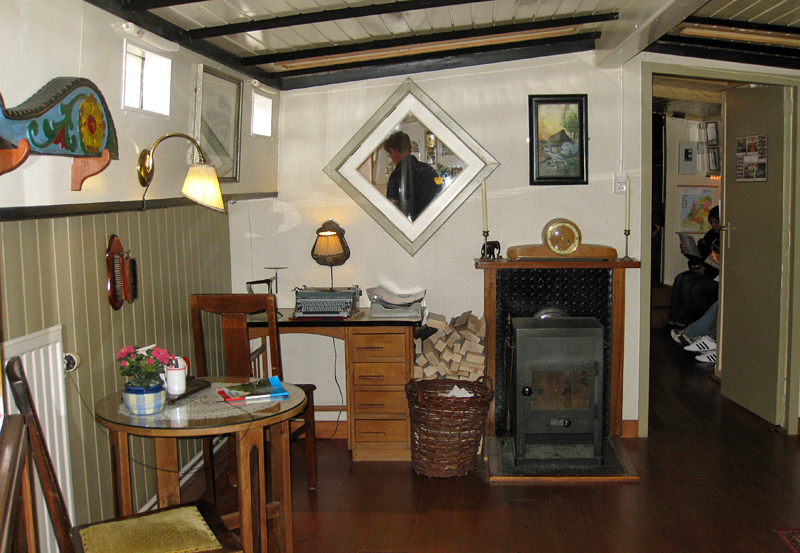Houseboat Museum Moored in an Amsterdam Canal
Step aboard a floating piece of Amsterdam history at the Houseboat Museum, moored on Prinsengracht canal in Amsterdam. Once a working cargo ship and family home, the Hendrika Maria offers a unique glimpse into life on the water.
Every inch of space was put to use. Beneath the aft deck were two tiny bunk beds, one for the children and the other for the skipper and his wife. There was no toilet on board; instead, a simple bucket and rope served for scooping water. In the late 1960s, the cargo ship was transformed into a houseboat, and today, a visit feels like stepping into a perfectly preserved 1970s time capsule.
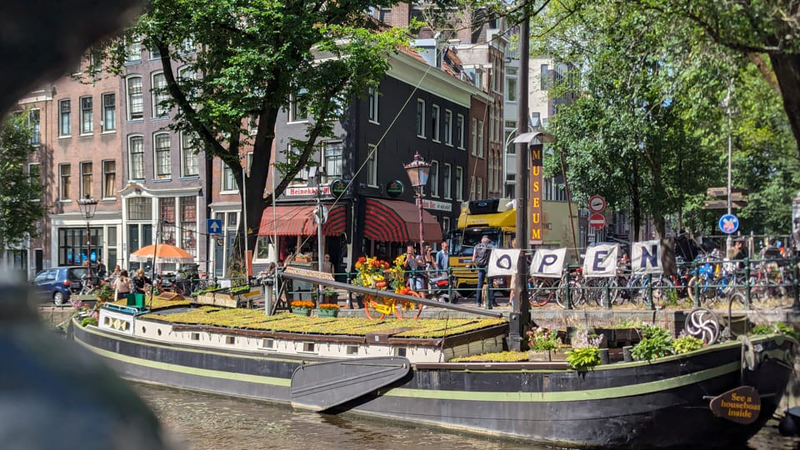
From Cargo Ship to Houseboat
How to live on an Amsterdam Canal? The Hendrika Maria was built in 1914 and originally a cargo sailing ship, transporting wood and gravel across the Netherlands. Cleverly designed with a shallow draft, it could navigate even the shallowest waters.
In 1967, the ship was converted into a houseboat and for thirty years, a family called it home. After its residential days ended in 1997, the boat reopened as a museum, decorated in a 1950s style. In 2024, new owners gave it a 1970s makeover. The bright colours, orange and brown, and the vintage furniture reflect the living style of the people who lived there from 1967 to 1997.
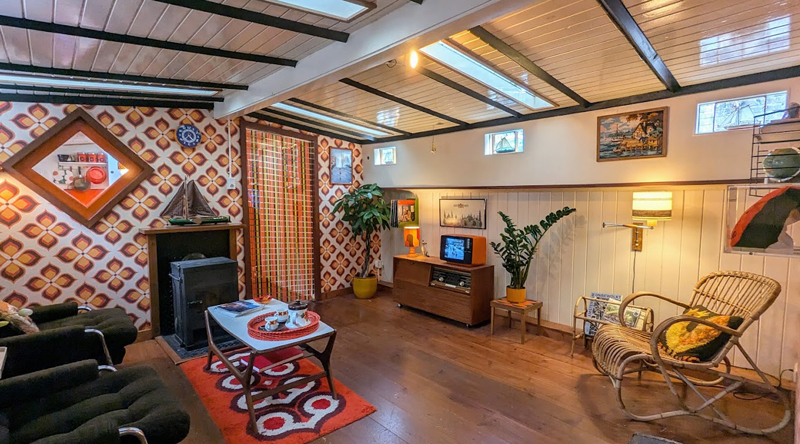
Step Aboard and Travel Back in Time
Audio Tour
The tour is available in eight languages and begins at the rear of the boat in the tiny cabin where the skipper family once lived. Here, you’ll see how a family of four managed life in cramped quarters, where every nook was cleverly used.
From Cargo Hold to Kitchen
A narrow corridor leads to the kitchen, once the cargo hold, now the museum’s office where you will buy your ticket. The 70s vibe shines here with bright orange cabinets and vintage touches.
A Living Room on the Water
The living room is where the retro atmosphere really comes alive. Warm tones, a wood stove, and classic furniture recreate the charm of the 1970s.
Sleeping Area and Bathroom
Behind a partition lies a snug sleeping area with a double bed, and a small bathroom cleverly fitted with a toilet and shower, a smart use of limited space.
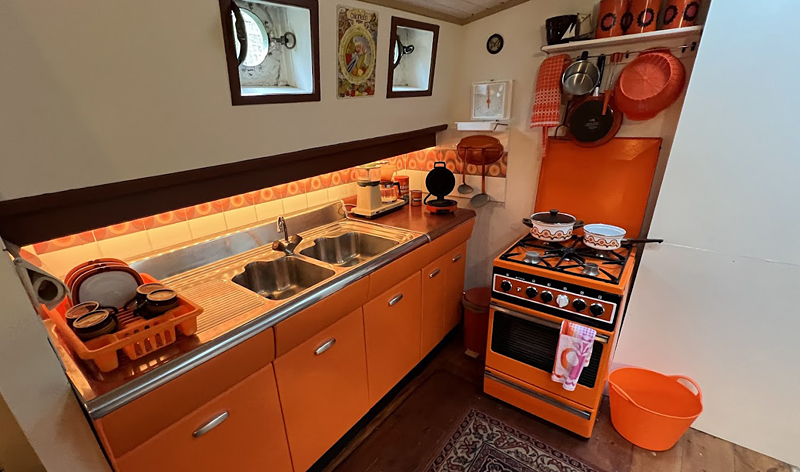
Discover the Boat’s Story
Check out the timeline wall to learn about the boat’s history and the fascinating story of Amsterdam’s canals. Watch a Short Film and Mind Your Head! Duck into the tiny projection room for a three-minute film about houseboat life. Peek through the window to see the boat’s front section, once home to the anchor chain and a servant’s bunk. You can also admire the original steel construction with its historic rivets.
A Quick Note:
In Dutch, there’s a difference between a houseboat (a boat that can sail, though rarely does) and a woonark (a floating bungalow on concrete pontoons that cannot move).
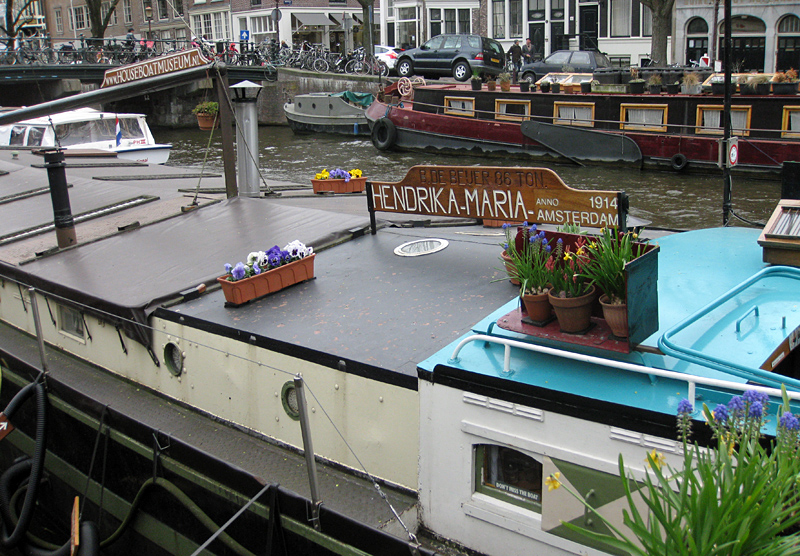
Life on Amsterdam’s Houseboats
In the past, when the canals in Amsterdam were still used for the transport of goods, it was a sign of poverty to live on a houseboat. The canals gradually lost their transport function, and the warehouses on the quays were no longer used for the storage of goods.
After the Second World War there was a housing shortage and many cargo ships were converted into houseboats. At the same time, the warehouses along the canals were converted into apartments, as can be clearly seen on Brouwersgracht.
Today, houseboats are highly desirable, offering modern comforts with unbeatable canal views.
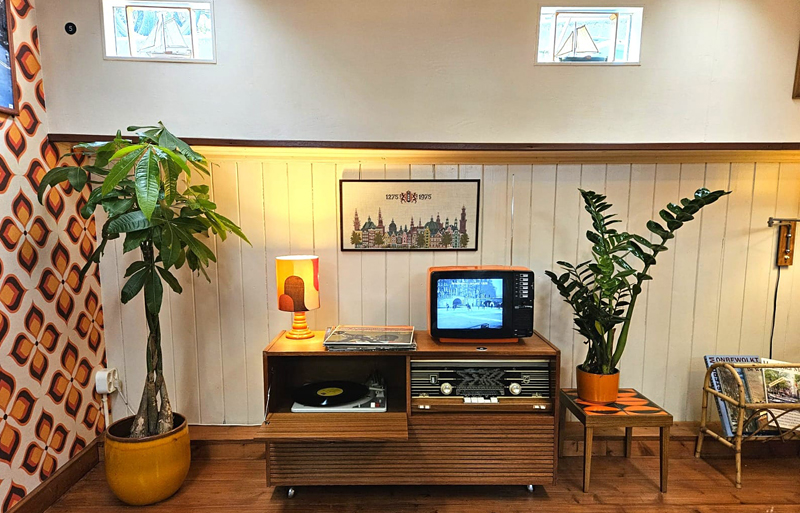
Why Visit the Houseboat Museum?
This museum is a must-see for canal enthusiasts, retro fans, and history lovers. The colourful 70s decor, engaging audio tour, and authentic setting turn this old cargo ship into a living, floating time capsule.
Visitor Information
Visit Duration: About 30 minutes, though you’re welcome to stay longer if it’s not too crowded.
Note: Limited space means visitor numbers are restricted. You may need to wait during busy times.
Extras: There’s a small shop selling books, souvenirs, and hot drinks.
Address: Houseboat Museum, Prinsengracht 296-K, Amsterdam
Opening Hours: Daily, 10:00 AM – 5:00 PM
Entry: Free with the I Amsterdam City Card
Photos below show the interior in 1950s style
